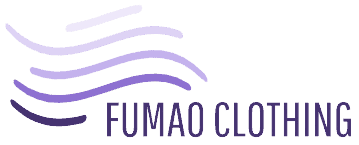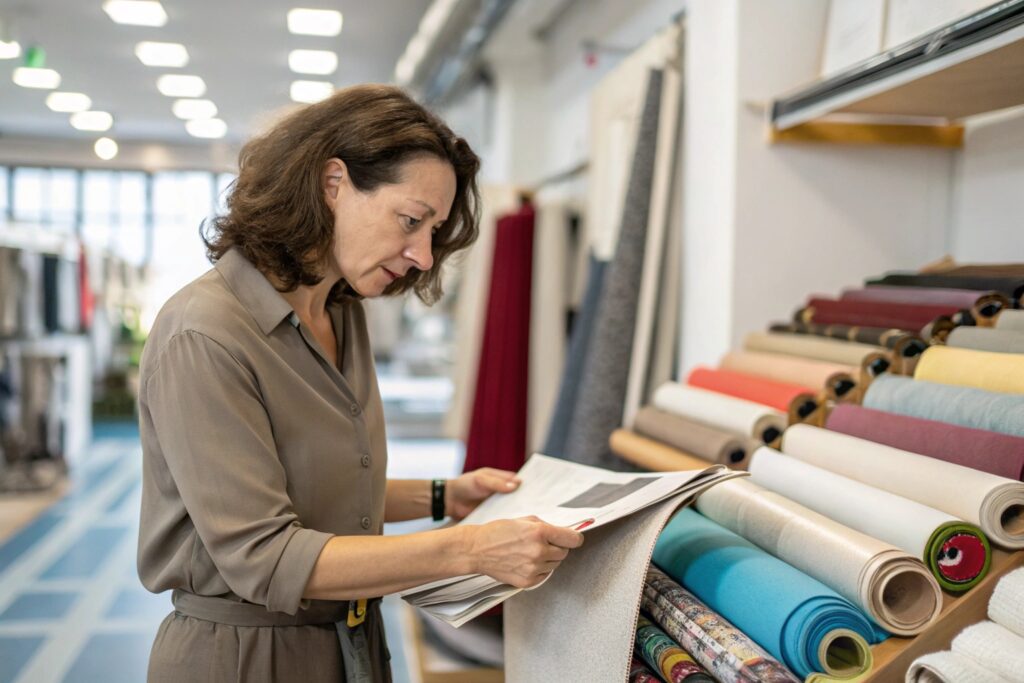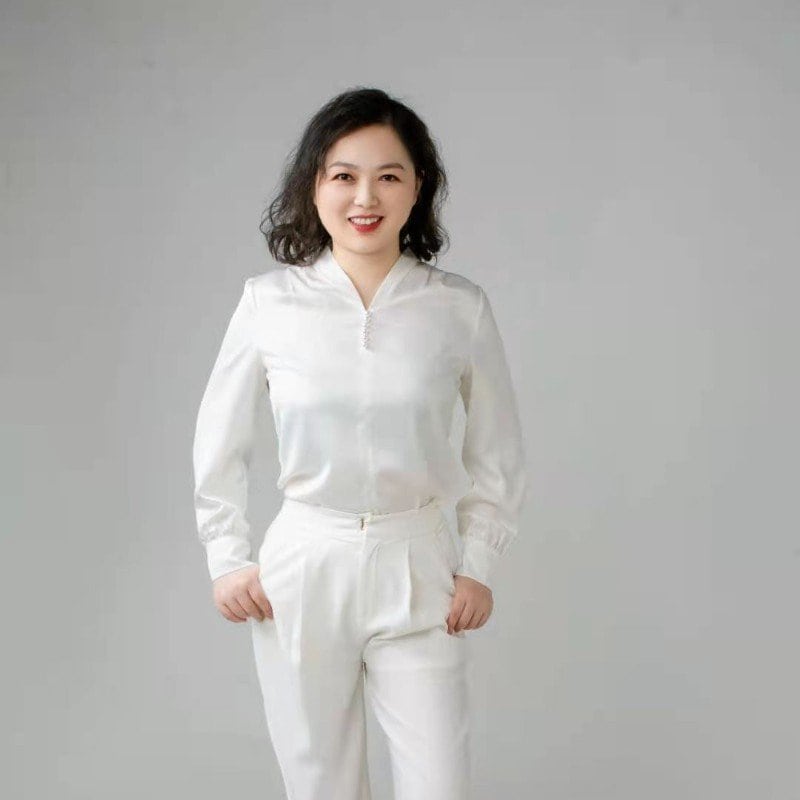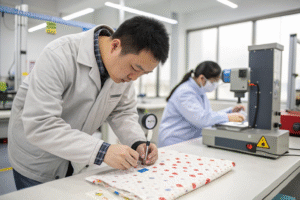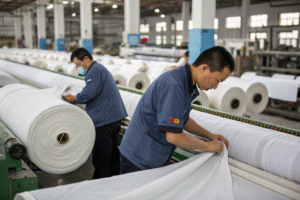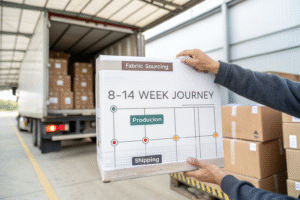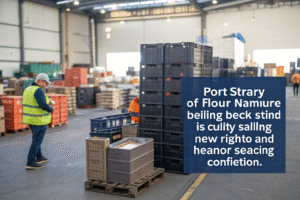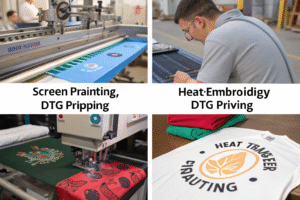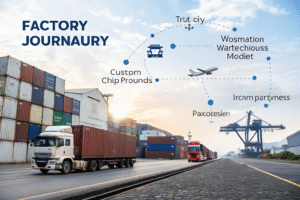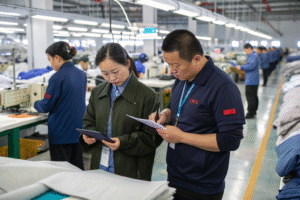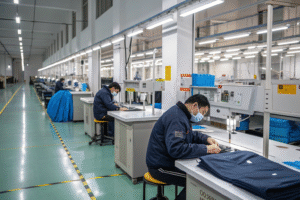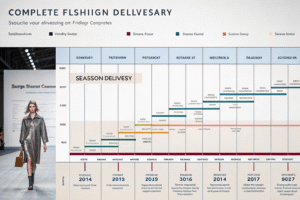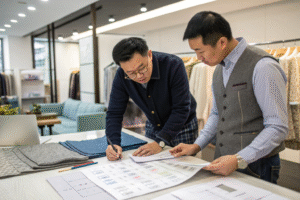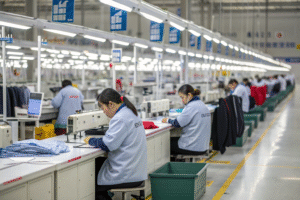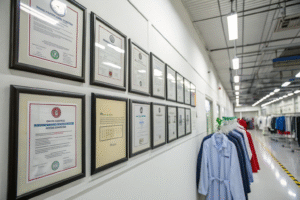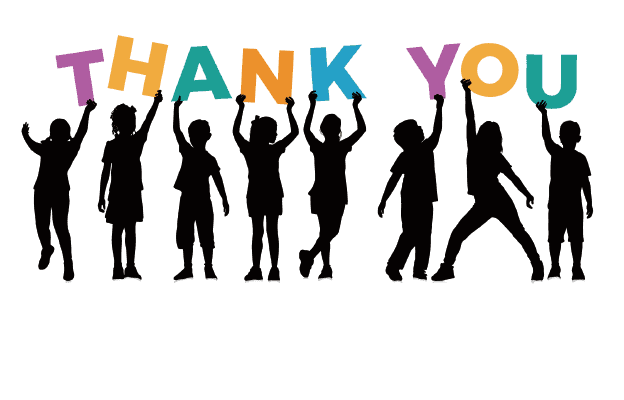The clothing manufacturing process is a structured workflow that transforms fabric into finished garments. But what are the key steps involved in this process?
The garment manufacturing process includes fabric selection, pattern making, cutting, sewing, finishing, and quality control. Each step ensures that garments meet quality standards, fit specifications, and market demands.
Understanding the complete production cycle allows brands and manufacturers to optimize efficiency, reduce costs, and maintain product consistency.
What Is the Garment Manufacturing Process From Fabric to Finished Product?
Turning raw fabric into a market-ready garment requires precision and coordination. But what does the full manufacturing process look like?
The garment manufacturing process follows a sequence of fabric selection, pattern making, cutting, sewing, finishing, and quality control. Each step ensures garments meet brand specifications and customer expectations.
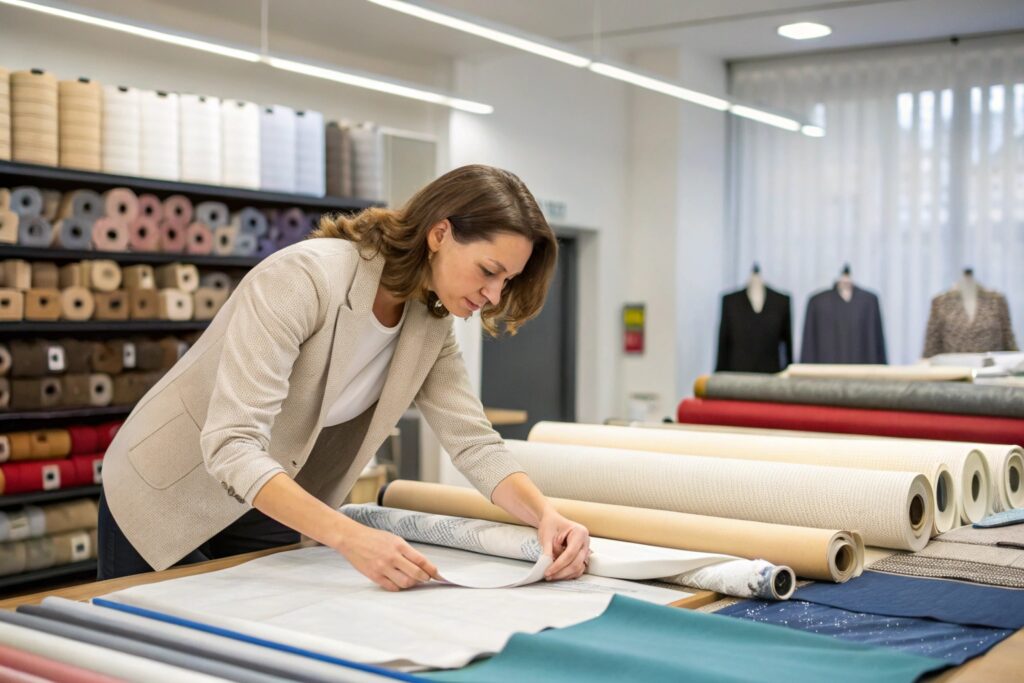
What are the essential steps in garment production?
| Step | Description |
|---|---|
| Fabric Selection | Choosing textiles that fit design and durability requirements |
| Pattern Making | Creating templates for garment construction |
| Cutting Process | Cutting fabric according to pattern layouts |
| Sewing & Assembly | Stitching fabric pieces together to create garments |
| Finishing & Quality Control | Adding trims, pressing, and inspecting for defects |
| Packaging & Distribution | Preparing garments for shipment to retailers |
Why is fabric selection critical in manufacturing?
The right fabric ensures garment durability, comfort, and visual appeal. Poor fabric choices can lead to shrinkage, wear issues, or poor fit.
How Is Clothing Made Step by Step?
The clothing production process follows a structured approach to ensure efficiency. But what are the step-by-step details?
Clothing manufacturing involves multiple stages, including material sourcing, cutting, stitching, finishing, and quality inspection. Each step plays a role in ensuring the garment meets high standards.

What are the major steps in making clothing?
| Step | Purpose |
|---|---|
| Material Procurement | Sourcing fabrics and trims from suppliers |
| Pattern Development | Creating size-specific templates for cutting |
| Fabric Cutting | Using automated or manual cutting tools |
| Garment Stitching | Sewing together different parts of the garment |
| Pressing & Finishing | Ensuring smooth appearance and correct shape |
| Final Inspection | Checking for defects before packaging |
How do manufacturers ensure quality during production?
- Pre-production sampling prevents design flaws.
- Automated cutting machines improve precision.
- Sewing audits ensure strong, even stitching.
- Final quality inspections filter out defective garments.
What Are the Stages of Clothing Production?
Garment production is divided into various phases, ensuring efficiency and quality control. But what are the primary production stages?
Clothing production follows distinct stages, including pre-production, production, and post-production. Each phase contributes to the garment's final appearance, durability, and market readiness.

What are the three main phases of clothing production?
| Production Stage | Key Processes |
|---|---|
| Pre-Production | Designing, material sourcing, and pattern making |
| Production | Fabric cutting, sewing, and assembling garments |
| Post-Production | Quality control, packaging, and distribution |
What challenges arise during clothing production?
- Supply chain delays can impact material sourcing.
- Production bottlenecks can slow down manufacturing.
- Quality inconsistencies can lead to customer dissatisfaction.
What Is the Workflow of Apparel Production?
Efficient production workflows are essential for mass garment manufacturing. But how do apparel factories organize the process?
The apparel production workflow includes design development, fabric processing, assembly, finishing, and quality assurance. Well-organized workflows reduce production costs and improve turnaround time.

What are the key components of an apparel production workflow?
| Workflow Step | Description |
|---|---|
| Design & Planning | Creating garment sketches and technical packs |
| Material Handling | Sorting and preparing fabric rolls for production |
| Production Line Setup | Organizing machines and workers for efficiency |
| Assembly Line Process | Stitching, pressing, and adding embellishments |
| Inspection & Approval | Final quality check before distribution |
How do manufacturers optimize the production workflow?
- Automating fabric cutting speeds up the process and reduces waste.
- Implementing lean manufacturing techniques minimizes inefficiencies.
- Using AI-driven forecasting helps brands adjust production volumes based on demand.
Conclusion
The clothing manufacturing process follows a structured workflow from fabric selection to final finishing. Understanding the step-by-step production cycle helps brands optimize efficiency, reduce costs, and maintain high-quality standards. As technology continues to shape the industry, apparel manufacturers must adapt to remain competitive in a fast-changing market.
